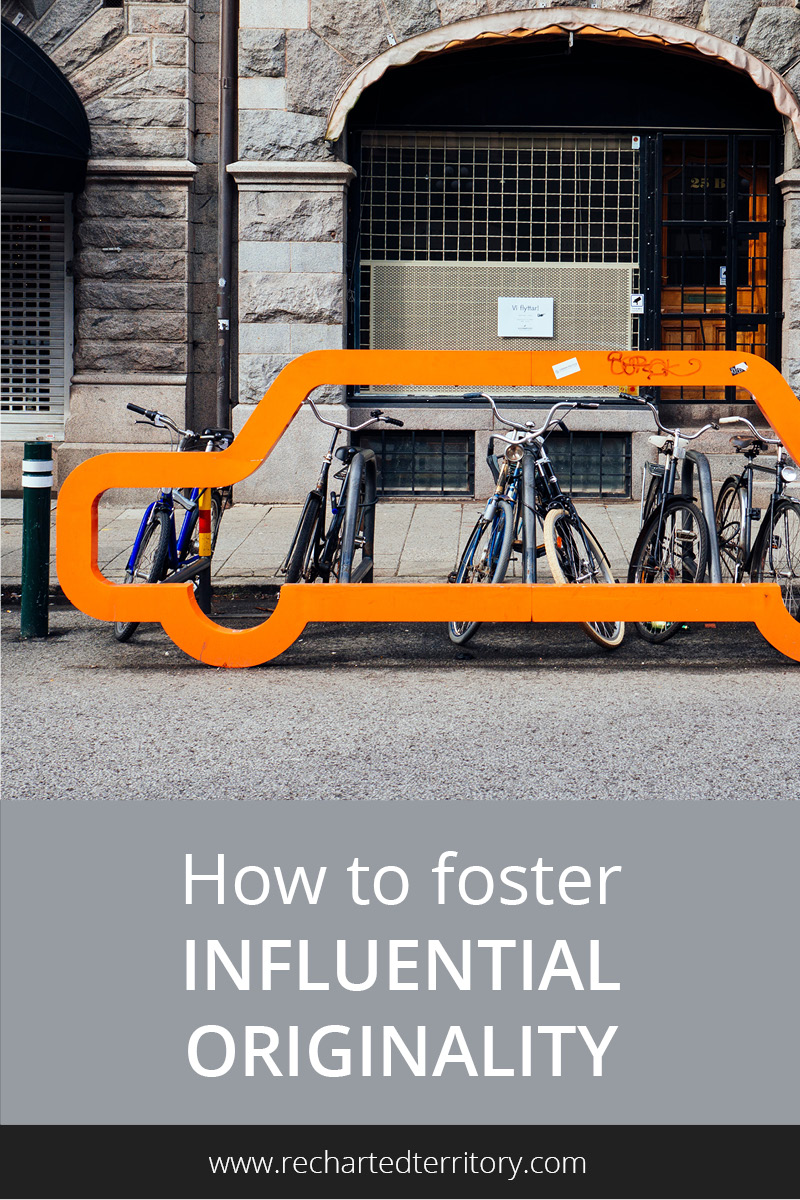

The May reading list book is called “Originals” but the subtitle hit closer to home: “How non-conformists move the world.” In the book, author and thought leader Adam Grant discusses research studies and stories about both what helps people deviate from the status quo and how they’re able to lead others and create sustainable change.
A bestseller, it shares many interesting findings and reiterates a lot of the concepts that we’ve seen in the creative product design and entrepreneurship space. There were four “actions for impact” in particular that I thought stood out for changemakers in difficult environments. Those of us tackling complex issues who need to persuade a variety of people to join the cause.
In Grant’s words these four were:
- Procrastinate strategically
- Make your ideas more familiar
- Motivate yourself differently when you’re committed vs. uncertain
- Ask for problems, not solutions
1. Procrastinate strategically
It seems counterintuitive to advocate for procrastination, but with the right conditions, it can promote originality. Rather than solving a problem right away, Grant advises stopping when the task is incomplete and sitting with it for a while. That allows you to both consciously and subconsciously keep working on the problem. Not choosing a solution right away also keeps you open to improvisation. You’ve spent so much time thinking about the problem and possible combinations that it’s easier to come up with spontaneous alternatives.
The key insight here for “strategic” procrastination is not to delay starting, but to start thinking about the task early and delay commiting to a direction or completing the task. By ruminating, brainstorming, and testing ideas over time, you spend more time in the divergent phase of the design process, which means a greater number of ideas and more chances for novel combinations.
“Great originals are great procrastinators, but they don’t skip planning altogether. They procrastinate strategically, making gradual progress by testing and refining different possibilities.”
– Adam Grant
Application to daily life
Find ways to leverage incomplete work. If you have a problem to solve and you want a more original solution, don’t settle on an answer right away or defer all work until right before you need it. Spend a few days just thinking about the problem. Then grab a sheet of paper, open up a Google Doc, or create a wiki page and start brainstorming. Add notes as you go but don’t select or delete anything yet. Continue for a few days or weeks. You could also try adjusting the ideation stages of an Enterprise Design Sprint. Maybe add a strategic gap in between the high-level and detailed to-be phases to let new ideas seep in over the weekend or while you go about other daily tasks.
2. Make your ideas more familiar
This concept is common in the marketing sphere but many engineers don’t learn it. The idea is that people are more likely to accept novel ideas if they also feel familiar. We can easily increase familiarity by taking advantage of the exposure effect. The exposure effect means that the more we encounter something, the more we like it, which researchers have found evidence for in different cultures and species.
If you’re struggling to get traction for an idea that’s too original for the setting, try adding some familiarity. That could mean sharing the concept with people multiple times in small bites (Grant advises 10-20 short reminders a few days apart). People are busy and dealing with information overload, so concepts are more likely to stick if they’re repeated and can be mapped back to something they know. Don’t forget that you know way more than anyone else about your topic and approach so what seems like redundant communication to you is probably still not enough.
Rob Minkoff explains how relating the novel Lion King concept to Shakespeare’s Hamlet helped it earn executive backing,
“It gives a large group of people a single point of reference. With absolute originality, you can lose people. Executives have to sell it, so they’re looking for those handles. It gives them something to hang on to.”
– Rob Minkoff
Application to daily life
Think about a message you want to share, maybe at work or in your personal life. Brainstorm seven ways you could communicate that message through verbal, visual, written, or physical forms. How can you re-frame it to fit metaphors your audience is aware of, pop culture references, nature, or classic stories? How could you break down a longer message or presentation into smaller pieces that can be shared over time?
3. Motivate yourself differently when you’re committed vs. uncertain
Forging a different path is tough. I was drawn to this tip as great guidance for both your internal monologue and leadership pep talks. Grant advises that when you’re committed to an outcome, remind yourself of the gap between where you are and where you want to be. Looking toward the future and converting any fear around uncertainty to excitement about the journey to complete is energizing.
However, he says when you’re uncertain about moving forward, remind yourself of the progress you’ve already made. This strategy gives you some space at the low points to reflect on all of the work you’ve already accomplished, which turns your anxiety into enthusiasm and makes the future less daunting.
Application to daily life
Pay attention to how you and your team are feeling. Are you (a) excited and committed to the goal ahead? Or (b) feeling burnt out or overwhelmed? If (a), pull out your vision and roadmap, review your metrics, project plan and backlog and assign some dates or keep refining the details. If (b), schedule a retrospective and celebration. Reflect on what you’ve all accomplished and what you learned along the way. Look at the physical product you created, review testimonials, talk to past clients. Then treat yourself and do something fun to celebrate. That should give you a kick-start reminder of why you started and the impact you’ve already created.
4. Ask for problems, not solutions
I’ve worked with organizations where people didn’t feel comfortable informing the executive of an issue without having solution options for the exec to consider. That approach can be fine for smaller problems but is not an effective organizational habit, according to David Hofmann. Hofmann helps companies create cultures that detect, correct, and prevent errors. He assessed NASA after the Columbia space shuttle explosion and found that,
“a culture that focuses too heavily on solutions becomes a culture of advocacy, dampening inquiry.”
– Adam Grant, summarizing Hofmann’s findings
Grant offers an alternative approach that also benefits originality. Instead, encourage people to bring problems, not solutions. This approach ensures that people don’t converge too quickly on a solution. Since each person has a relatively narrow view of the problem and solution options, consulting a wider range of credible people takes advantage of their joint knowledge about the subject.
Application to daily life
When you’re working on more complex issues, don’t make a to-do list, make a problem list. Collect them in a document or a database, group them into categories and add in qualitative and quantitative data to provide more context. Then look at which problems most impact your goals and create regular forums for people to dig into root cause analysis and explore solutions.
There were so many other insights to reference whenever you need a jolt of originality that sticks. If you’ve devoured the book as well, what other insights did you pull from it?